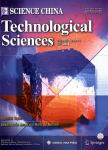A calibration and compensation method for an industrial robot with high accuracy harmonic reducers
作者机构:School of Mechanical EngineeringShanghai Jiao Tong UniversityShanghai 200240China College of Computer and Control EngineeringNortheast Forestry UniversityHarbin 150040China
出 版 物:《Science China(Technological Sciences)》 (中国科学(技术科学英文版))
年 卷 期:2024年第67卷第3期
页 面:725-739页
核心收录:
学科分类:08[工学] 0805[工学-材料科学与工程(可授工学、理学学位)] 0802[工学-机械工程] 080201[工学-机械制造及其自动化]
主 题:industrial serial robot Model-Y harmonic calibration stiffness model online compensation
摘 要:Industrial serial robots need high stiffness to keep absolute pose accuracy and meet the requirements in practical applications. However, the weak stiffness feature of robot joints and the payloads affected on robot end-effector, which will also increase the pose error of robot. Especially, the existing calibration methods often consider under no-payload condition without discussing the payload state. In this paper, we report a new industrial serial robot composed by a new harmonic reducer: Model-Y, based on high accuracy and high stiffness, and a kinematic parameter calibration algorithm which is based on a harmonic reducer forcedeformation model. To decrease the accuracy effects of payload, an iterative calibration method for kinematic parameters with payload situation was proposed. Simulation and experiments are conducted to verify the effectiveness of the proposed calibration method using the self-developed industrial serial robot. The results show a remarkably improved accuracy in absolute position and orientation with the robot s payload range. The position mean error has 70% decreased to 0.1 mm and the orientation mean error diminished to less than 0.01° after calibration with compensation. Additionally, online linear and circular tests are carried out to evaluate the position error of the robot during large-scale spatial and low-speed continuous movement. The accuracy is consistent with the previous calibration results, indicating the effectiveness and advantages of the proposed strategy in this article.



